Entering Seoul's palaces for free with Hanbok
I am happy to finally write this entry. Already in mid-October I visited the traditional palace with my buddy Louis, also wearing hanbok, and ended up just waiting until my boyfriend finally comes to Korea, so that we can repeat exactly the same thing - this time with a little more time and a camera in the hand. I'm talking about Gyeongbokgung Palace, one of the most popular palaces in Seoul because it's literally in the middle of Seoul and super easy to get to. But it also carries a deep meaning. The "Palace of Radiant Bliss" attracts many tourists because it is huge and one of the five palaces from the Joseon Dynasty, the most important dynasty in Korean history. In Hanbok, I visited this palace twice and now I'm finally telling you about it.
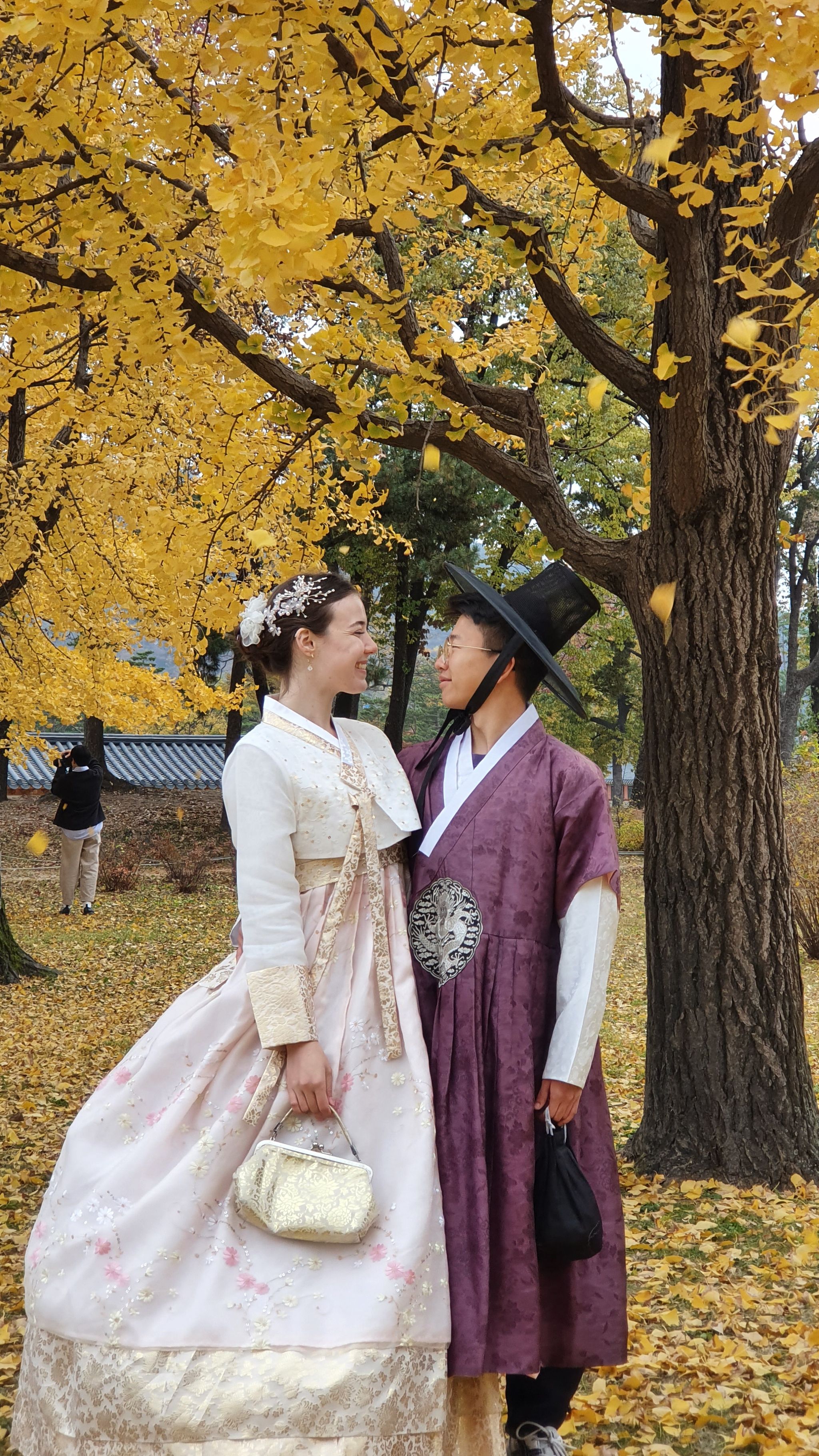

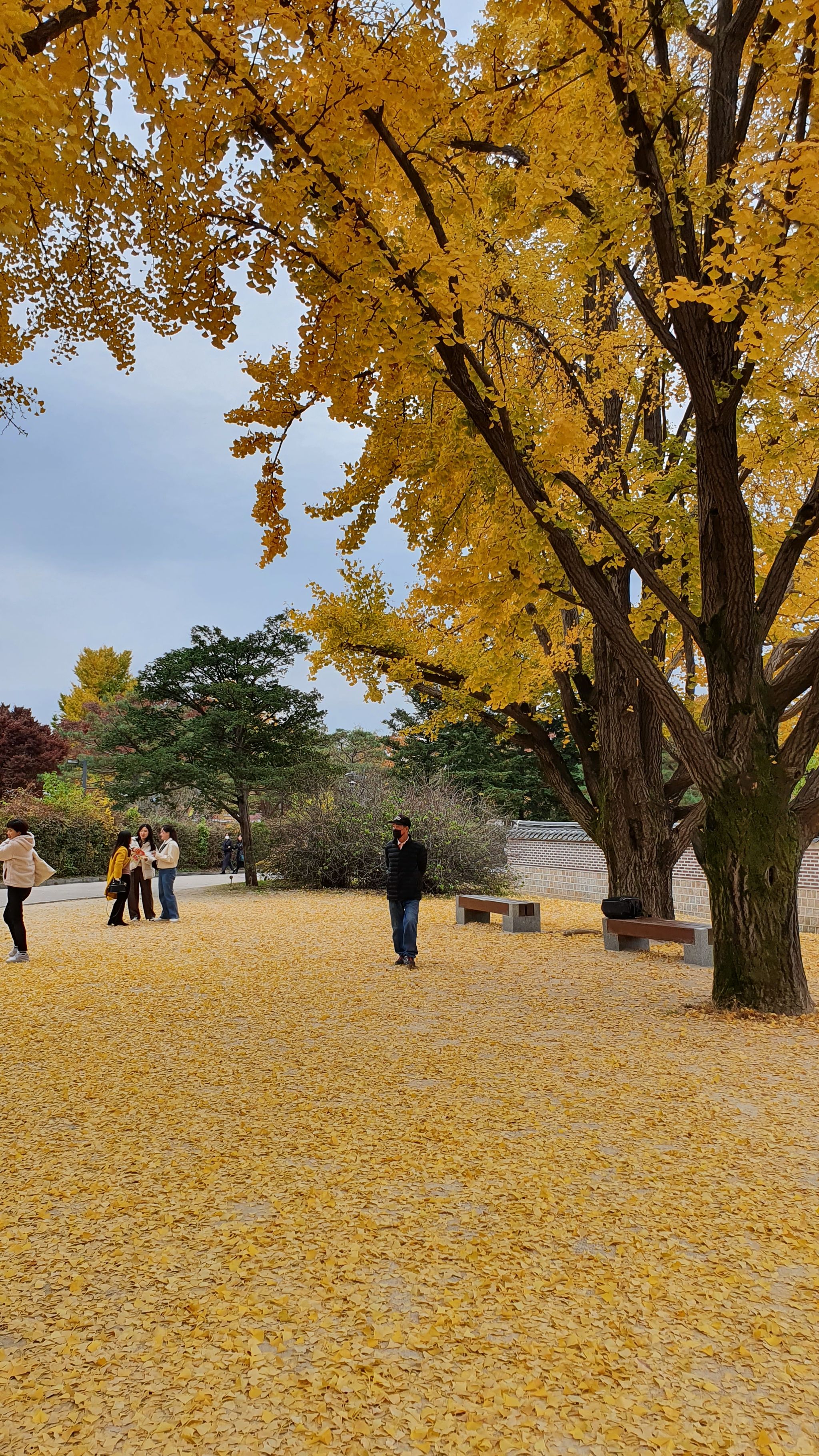

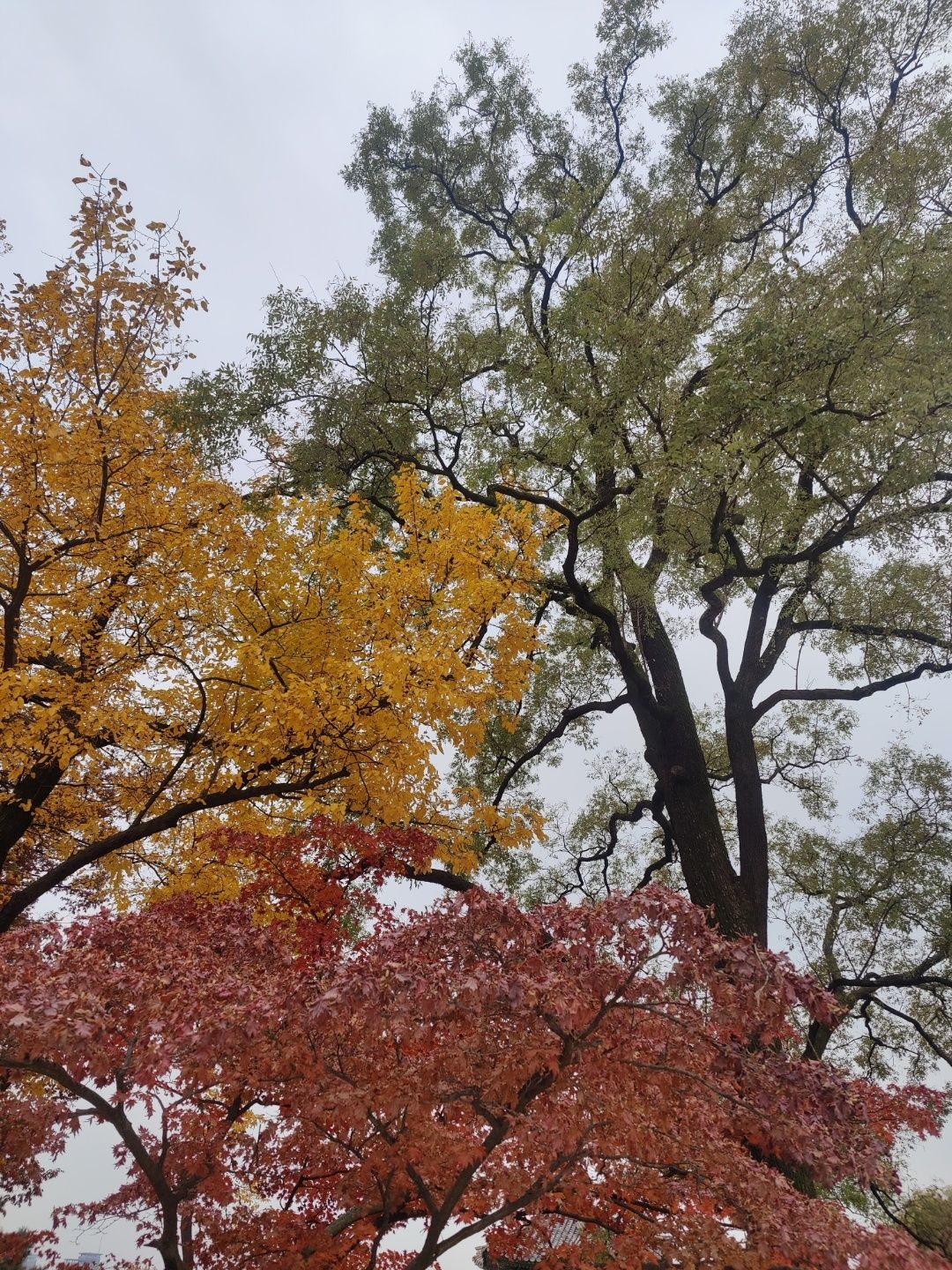

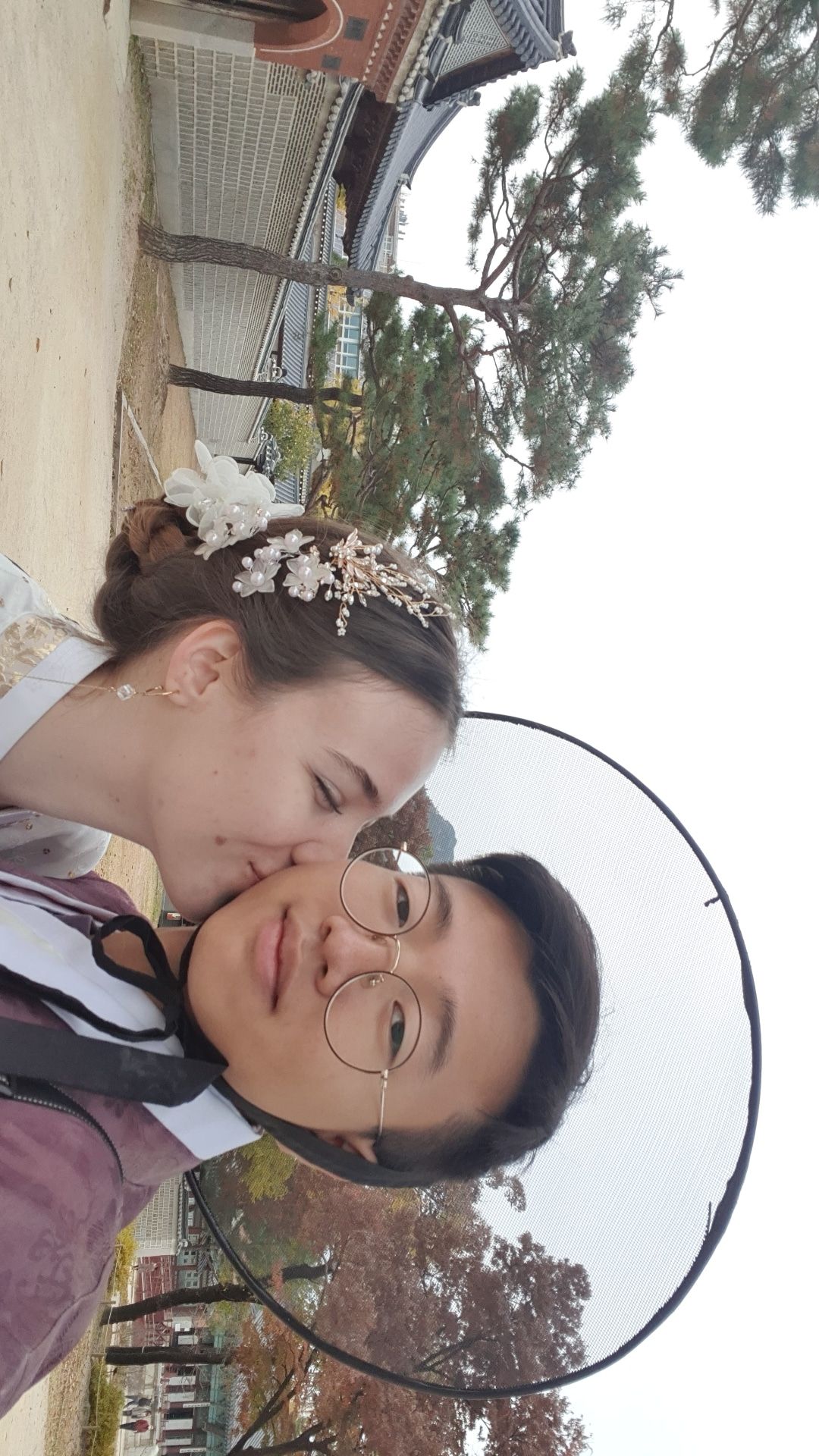

Hanbok - The traditional costume of South Korea
Hanbok is the traditional clothing of South Korea and was worn by high-ranking people then and even today on occasions such as weddings, holidays, New Year and festivals. In palaces, then, almost everyone was dressed in such clothing. Traditional hanboks are made from high-quality silk. Today's reenactments usually use cheaper materials, which are then rented. Accordingly, you do not need to buy a hanbok yourself, because this could be expensive, but simply rent one for 2-4 hours. Hanbok rental shops abound in front of the palaces or traditional villages of South Korea. There's a lot to choose from here, so it's mostly based on the price or favorite patterns of the hanbok you want to wear. I have observed so far that the prices differ minimally from each other. Most stores rent a hanbok for 23,000-25,000 KRW for 2 hours. For 4 hours it costs up to 30,000 KRW, but you have enough time to take pictures in peace and maybe visit the Hanok Village next to the palace. And we're talking here about around €20-25 for a traditional experience that just makes you feel royal and special - hairstyling and accessories are also included.
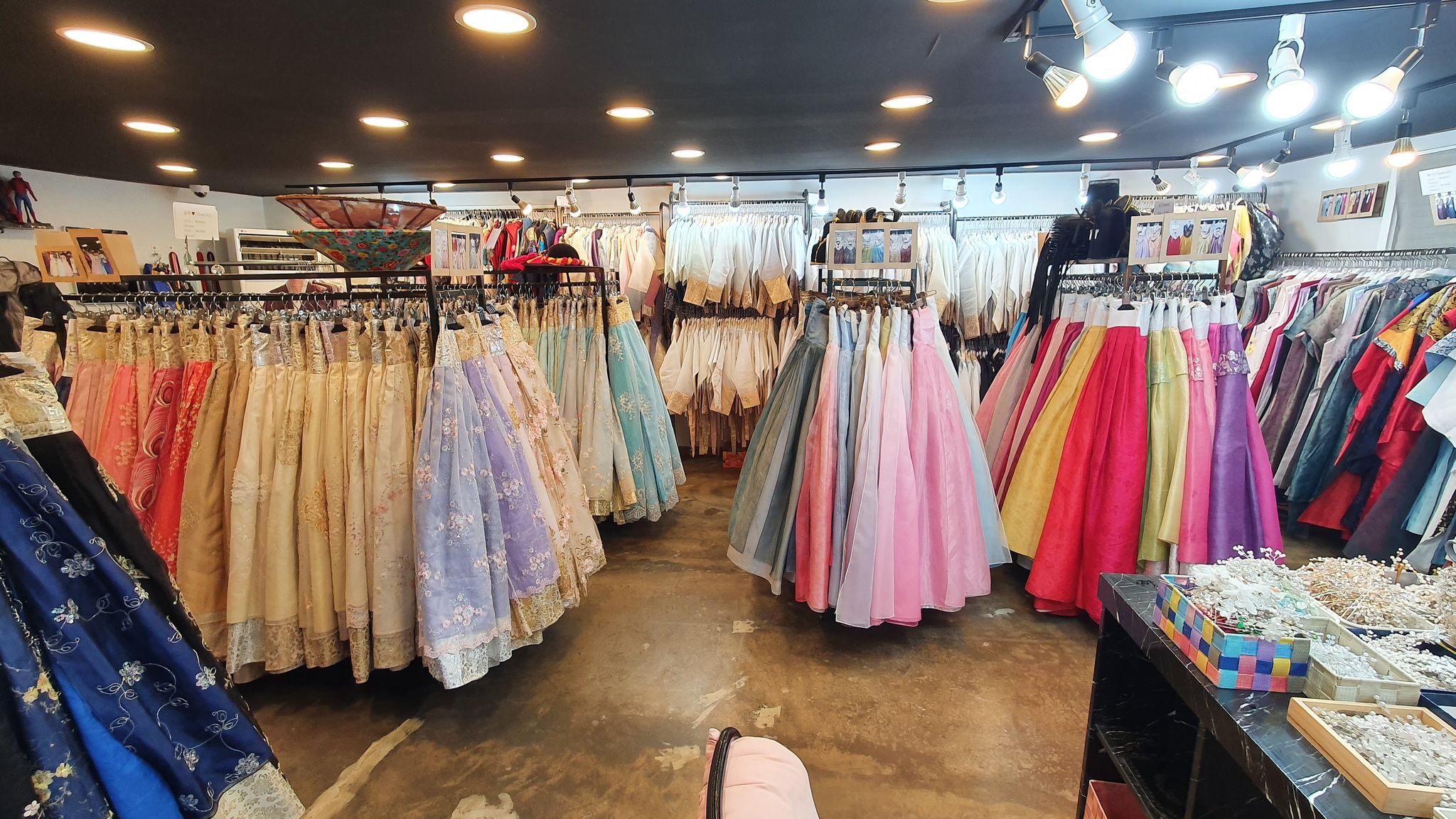





A women's hanbok consists of several layers: a classic undershirt and long underpants, a wide underskirt that holds the skirt over it and gives the whole outfit its rounded shape. The top skirt is also sewn to the chest piece and ties tightly at the back. A short, bolero-like jacket with wide sleeves is worn over it and this is closed with a large bow in front of the chest. It's a little more convenient for the men. They wear trousers, an undershirt and a long, colored robe, which is also closed with a bow. There is also a kind of net hat that is tied with a bow under the chin. The traditional outfits are ready. And don't worry: they help you get dressed!
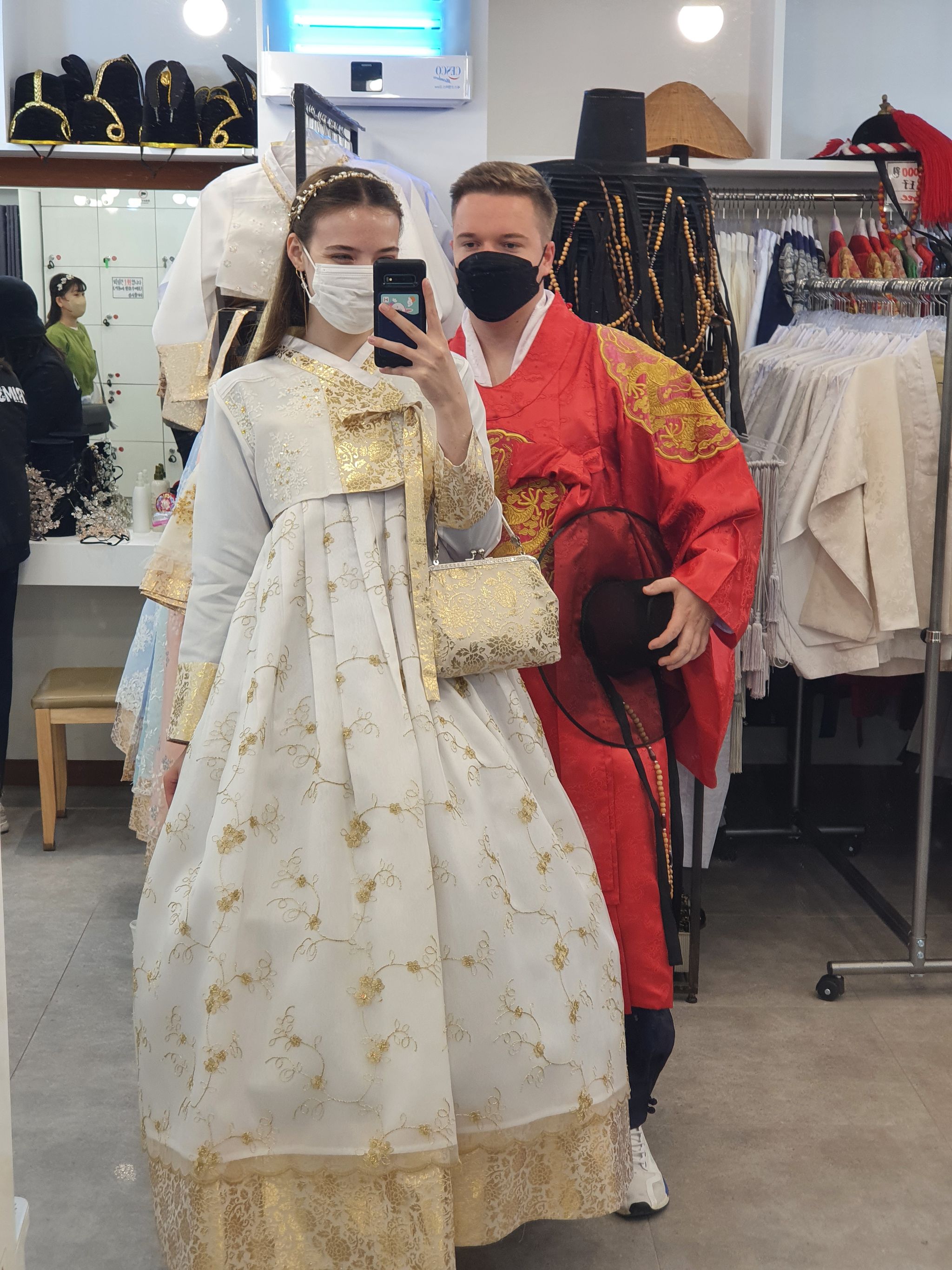

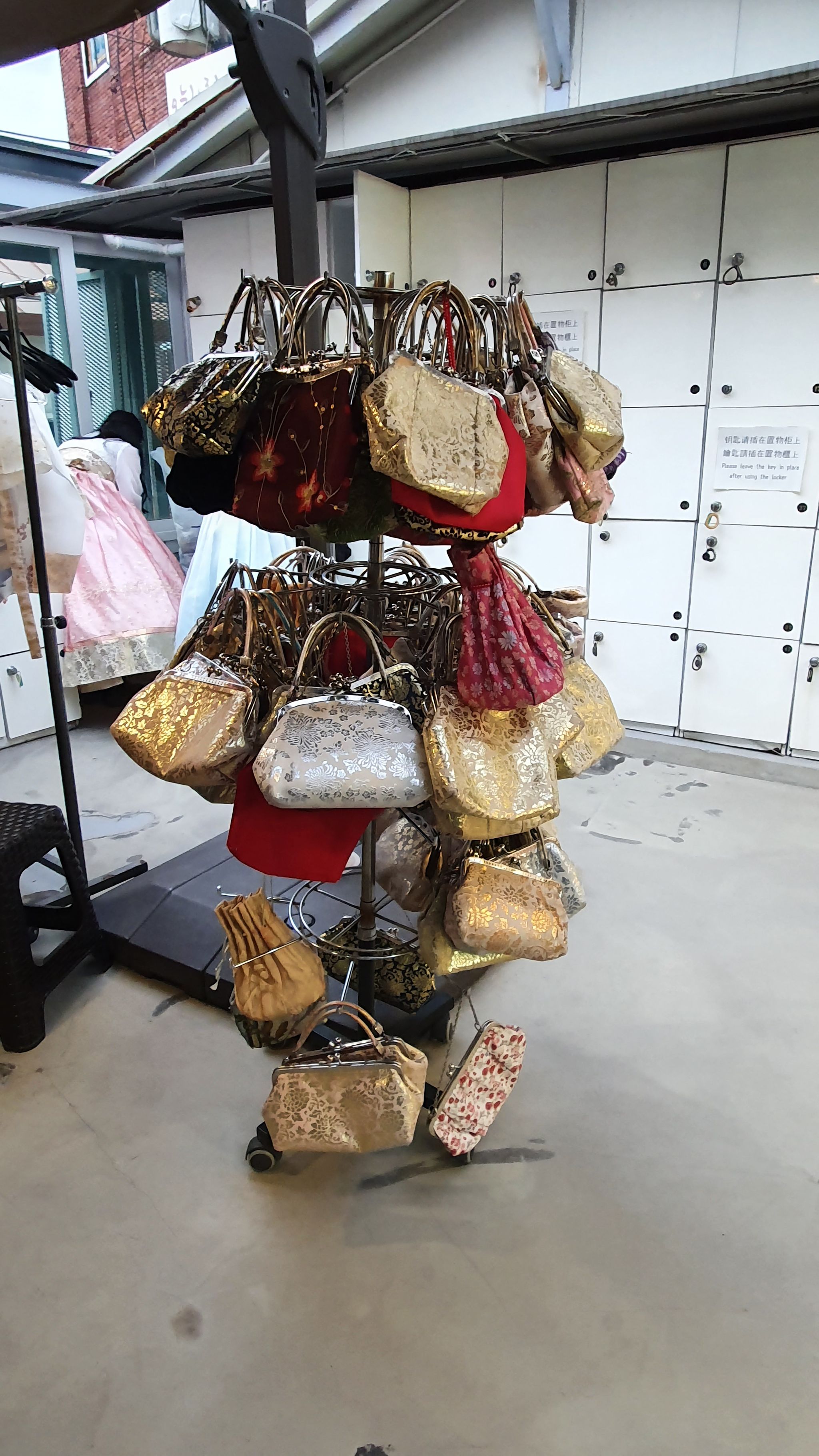

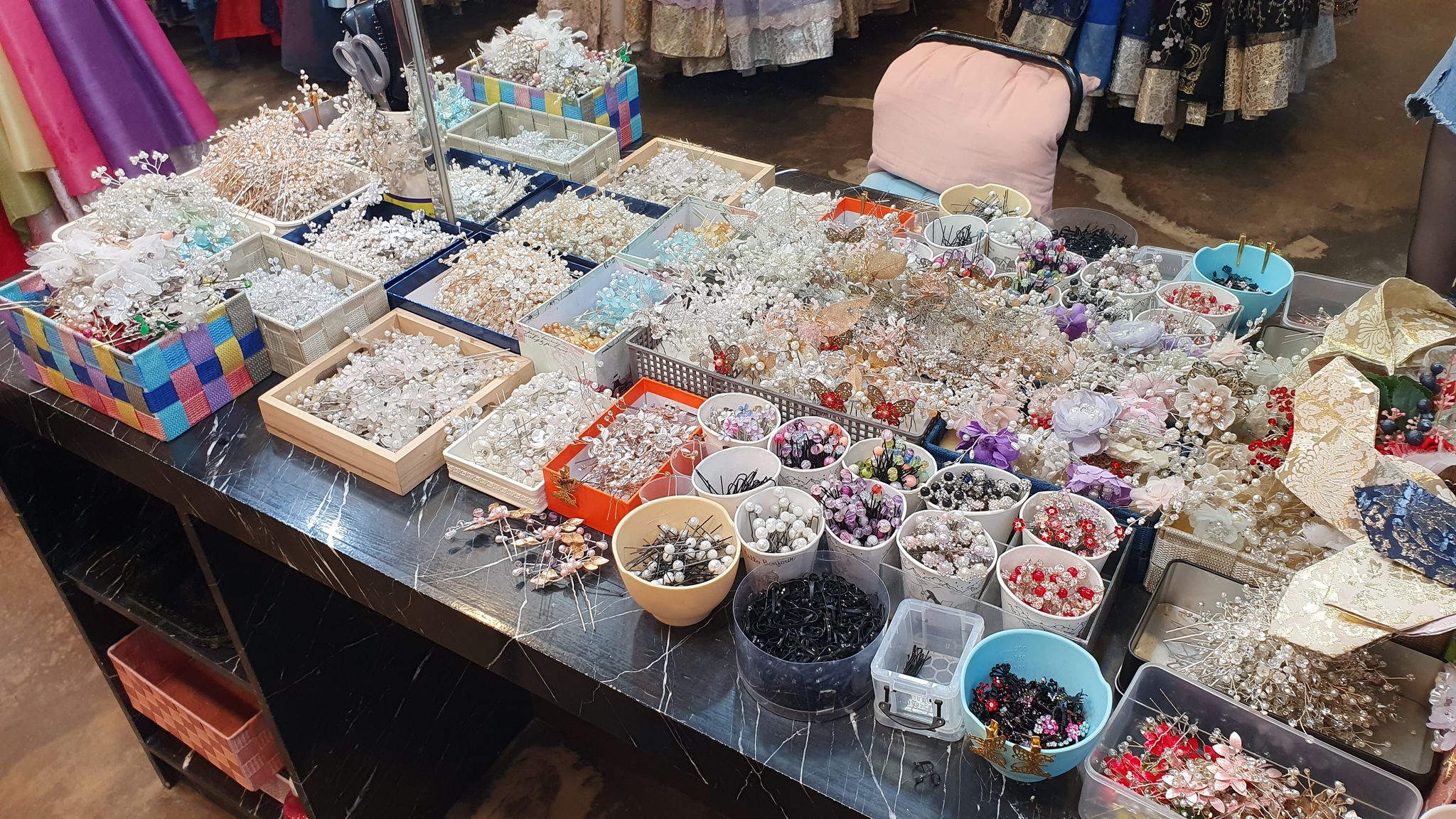

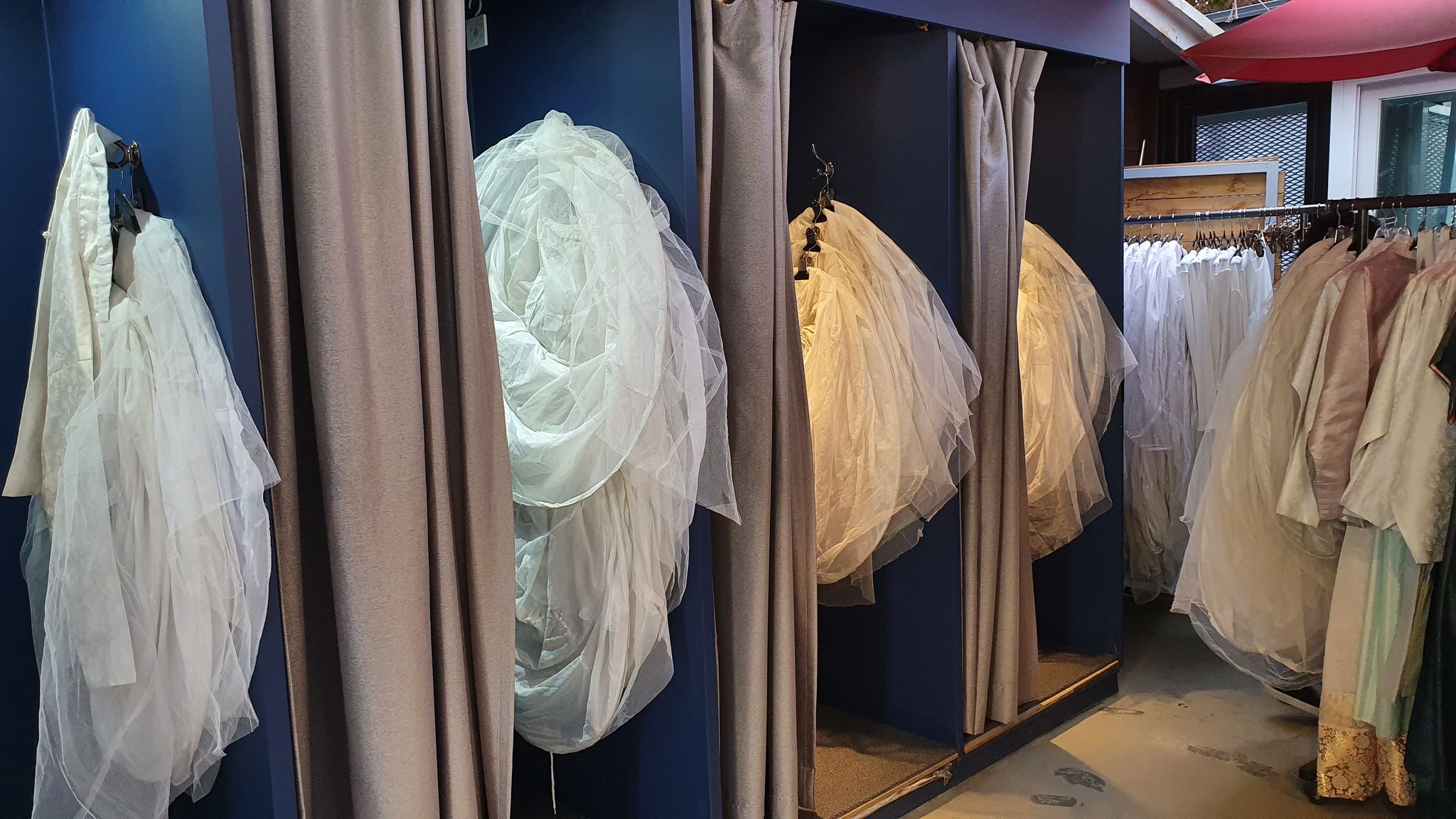

When you walk into the store, you are overwhelmed by the selection. Here you can find all sorts of colors from purple to yellow to red, blue, with flowers on it or plain or with golden embroidery etc. Depending on which hanbok shop you go to, there is more or less choice. In the first shop I went to, I got a very large selection for my height and then decided on white and gold. In the second shop they only had two dresses to choose from for my size: turquoise or pink - so I chose pink and gold with flowers. You can also choose between several hairstyles. For the more elaborate ones, an additional fee of 3-5,000 KRW is required, and I decided to do this because I wanted to wear my hair up with lots of hair accessories. But the first time, I left my hair down and just braided it back a bit with a gold headband; it didn't cost anything and it looks nice too.
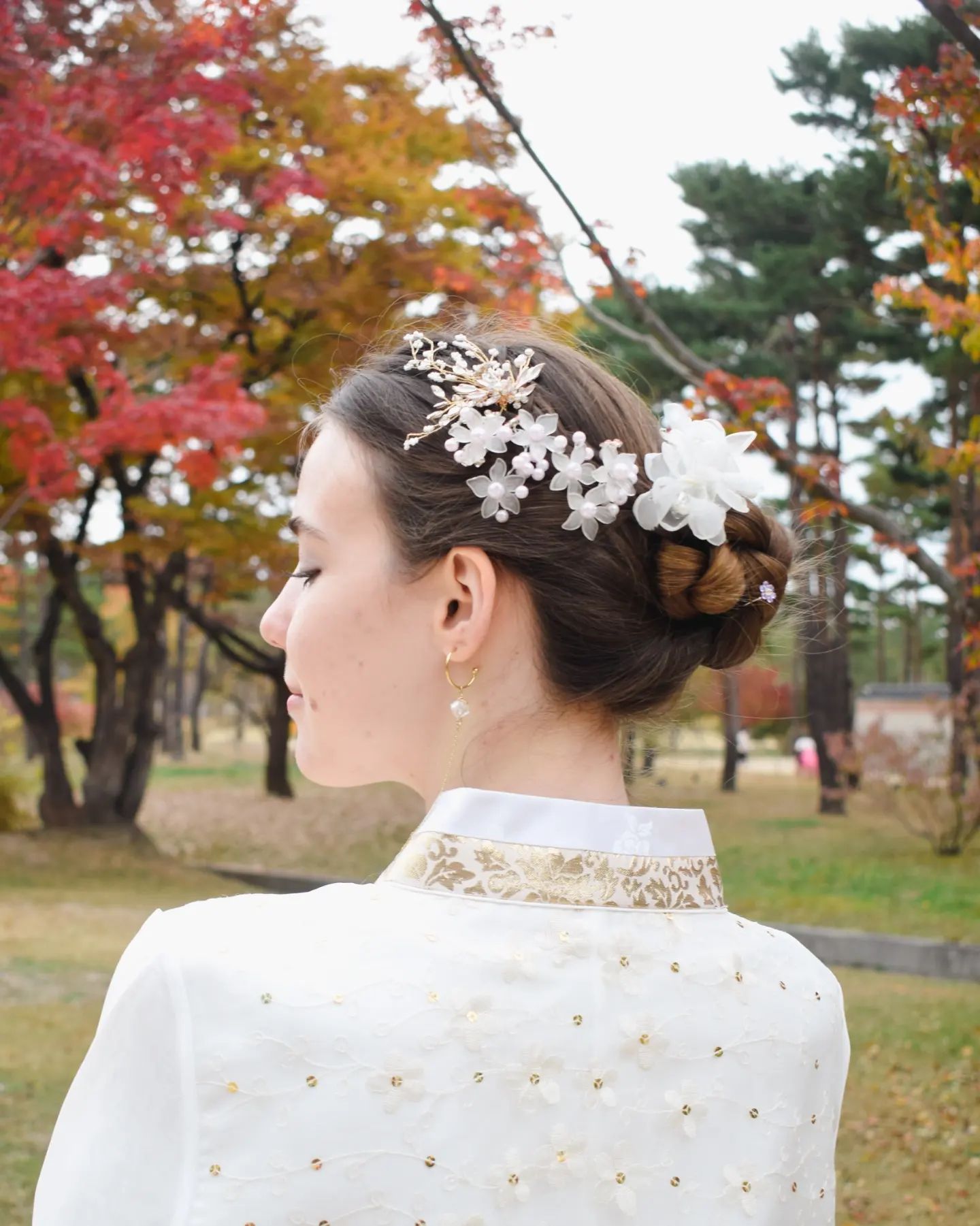

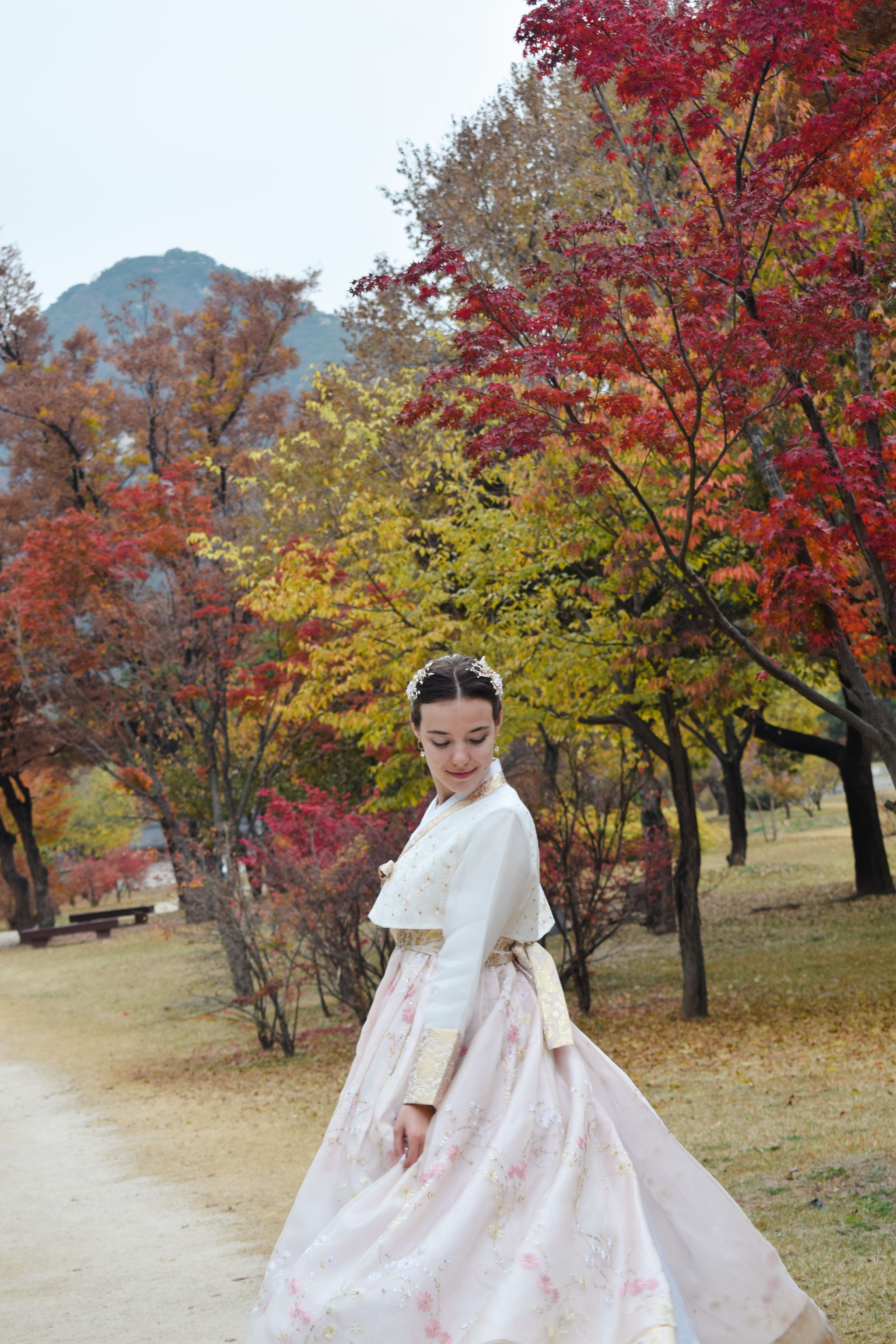

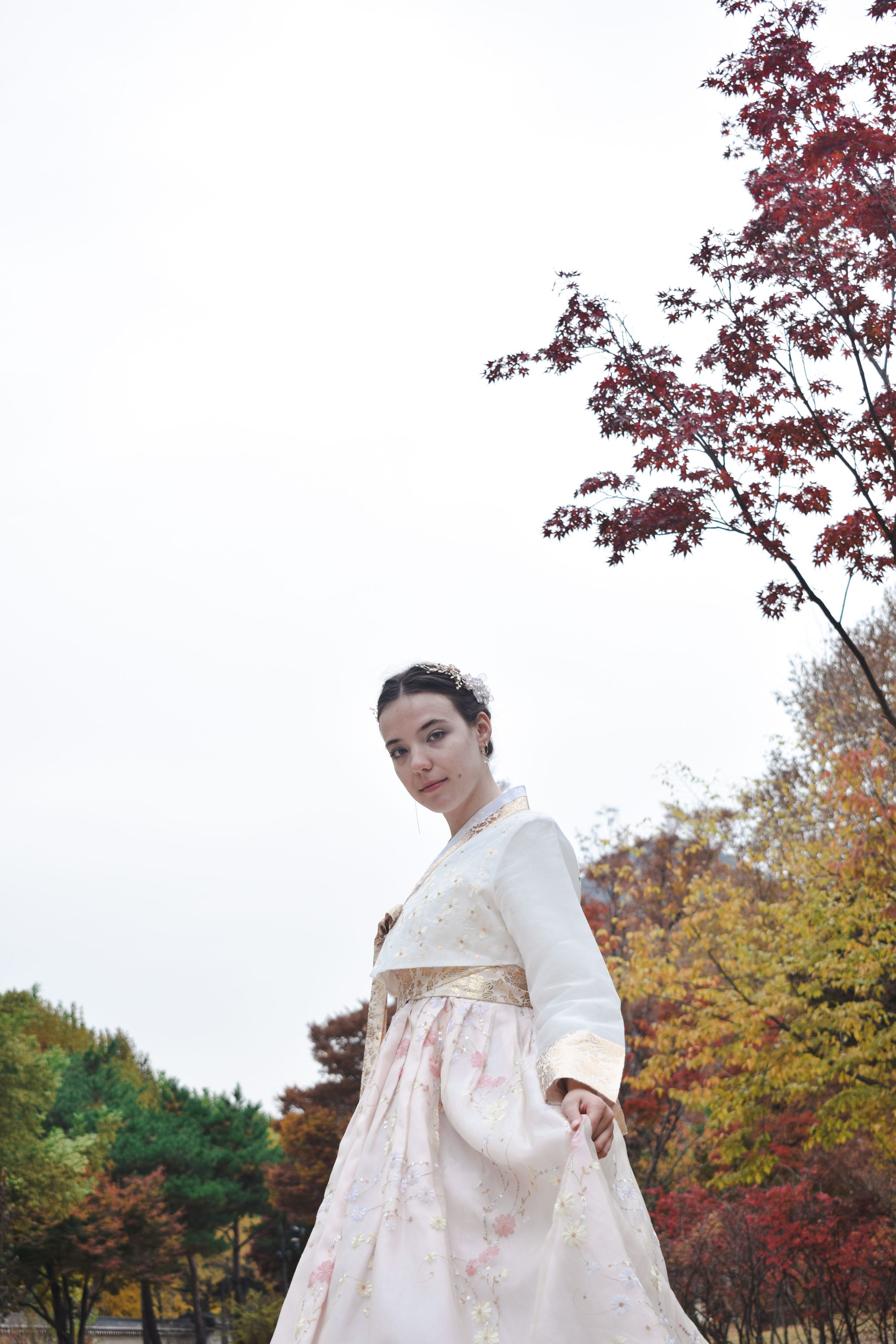

Walk through Gyeongbokgung Palace
We were ready for the palace. The first time the heat almost killed me with the hanbok, the second time we chose the coldest day of all and I almost froze to death in the thin robe. So be sure to go on a day when the sun is shining, but it's not very hot and the wind is certainly not freezing. As I mentioned before, the wealthy people from the palaces wore hanbok regularly, so those who wear hanbok are given free entry, like “belonging” to the palace. For everyone else, entry costs between 5-10,000 KRW, which is quite reasonable considering how huge the palace is.
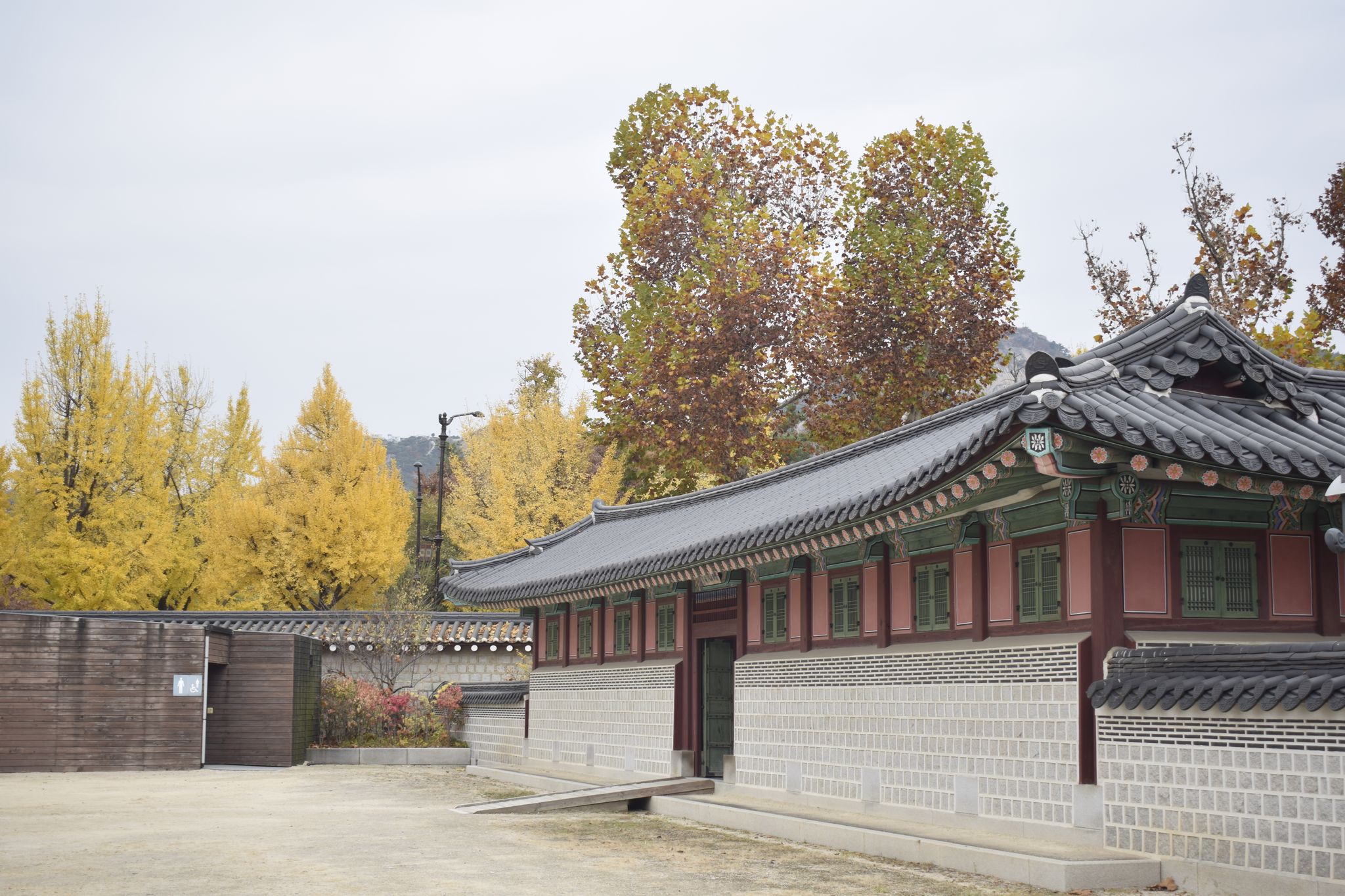



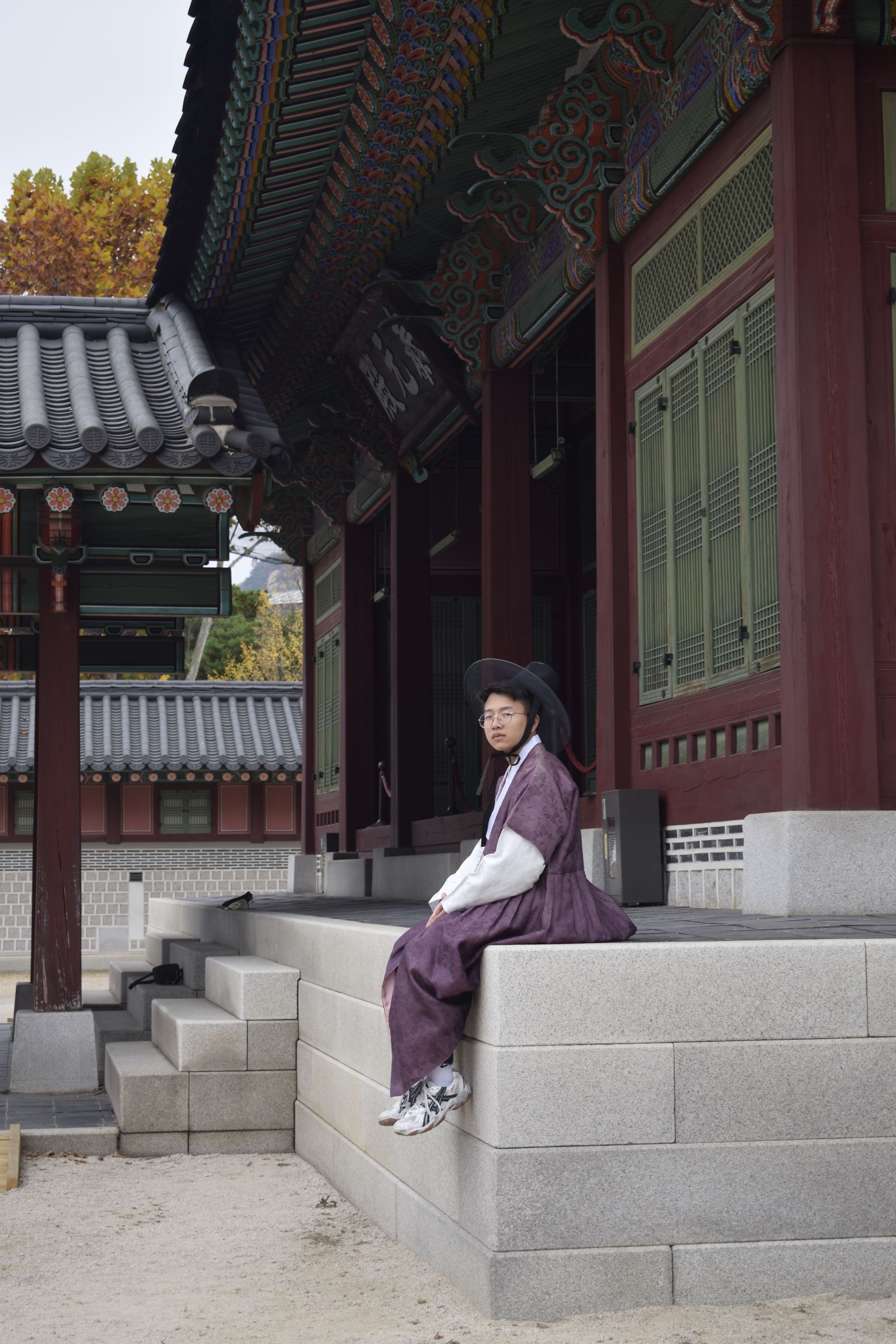

Walking through the huge palace, it is hard to believe that kings really lived here a few centuries and years ago. Even I asked myself how it was possible to keep track of things here. But there were probably a lot of servants and officers and who knows how many employees worked there at the time and needed space to live and sleep. The palace is not only made up of old, colorfully painted houses and roofs, with the royal house in the middle of the complex, but above all the huge parks with rivers around them. Here autumn was very beautiful to behold amidst all the trees with a view of the mountains surrounding the palace.
When I first passed through the palace with Louis, we were even approached by a "servant" of the king (a random man wearing a blue hanbok) who joked with to "be happy to serve the king." Louis wore the bright red and gold royal robe that only kings were allowed to wear that day, blue stands for servants. Together with the man's wife, we took a picture and bowed. So with hanbok you have all the attention on you and people admire you. So it's completely normal to see people dressed in hanbok doing photoshoots everywhere. You can even buy such a professional photoshoot via Airbnb.
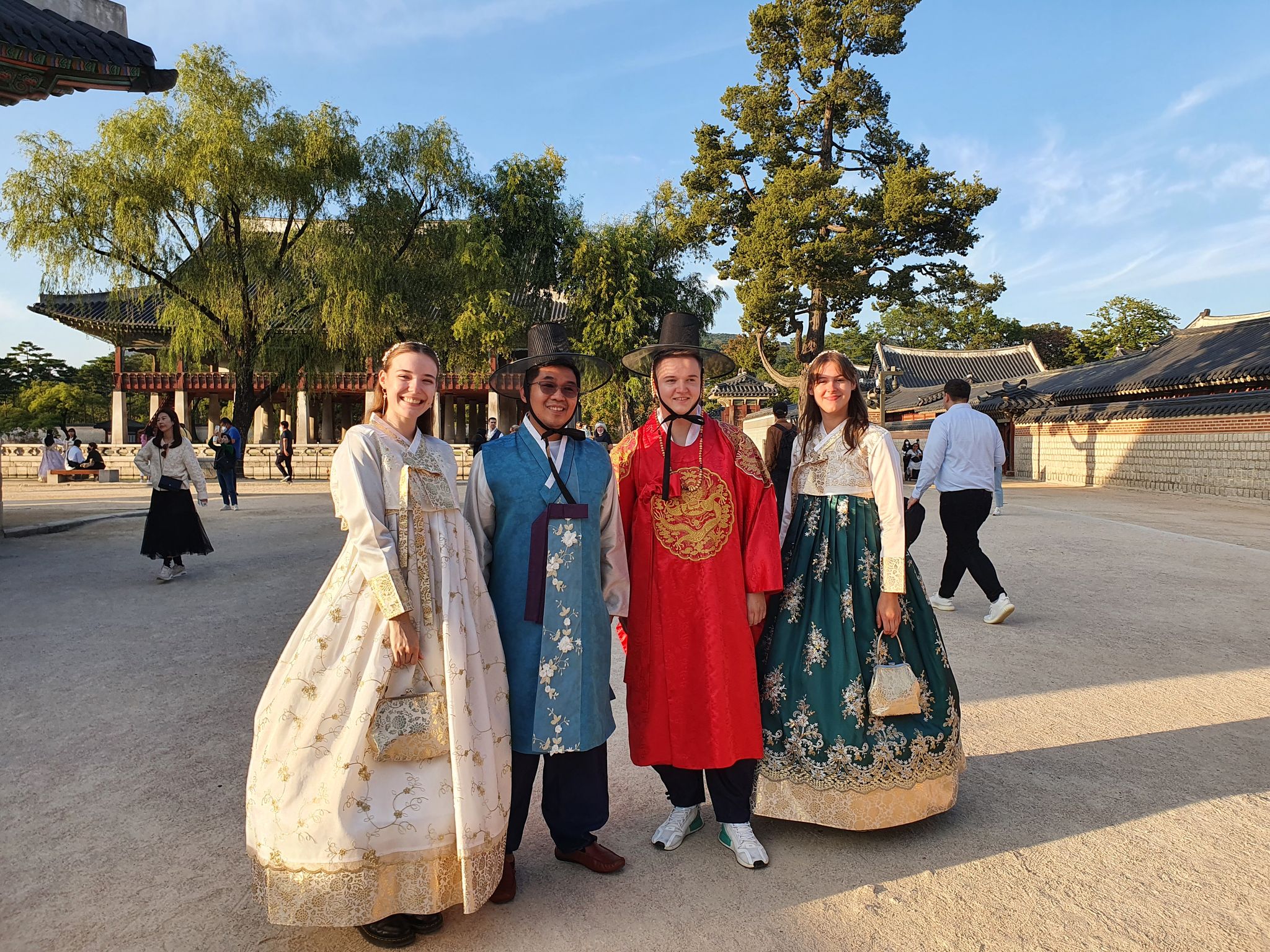

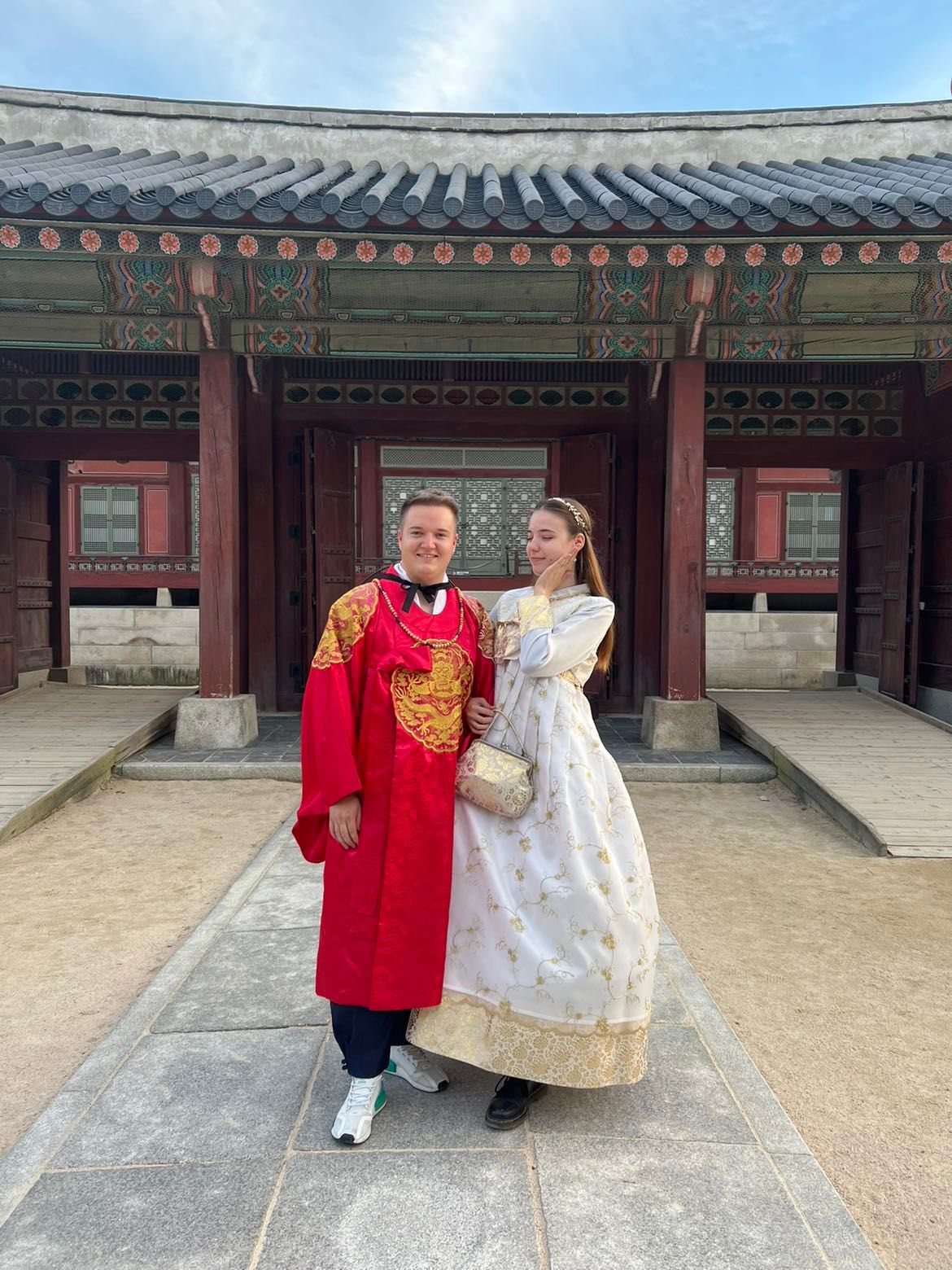

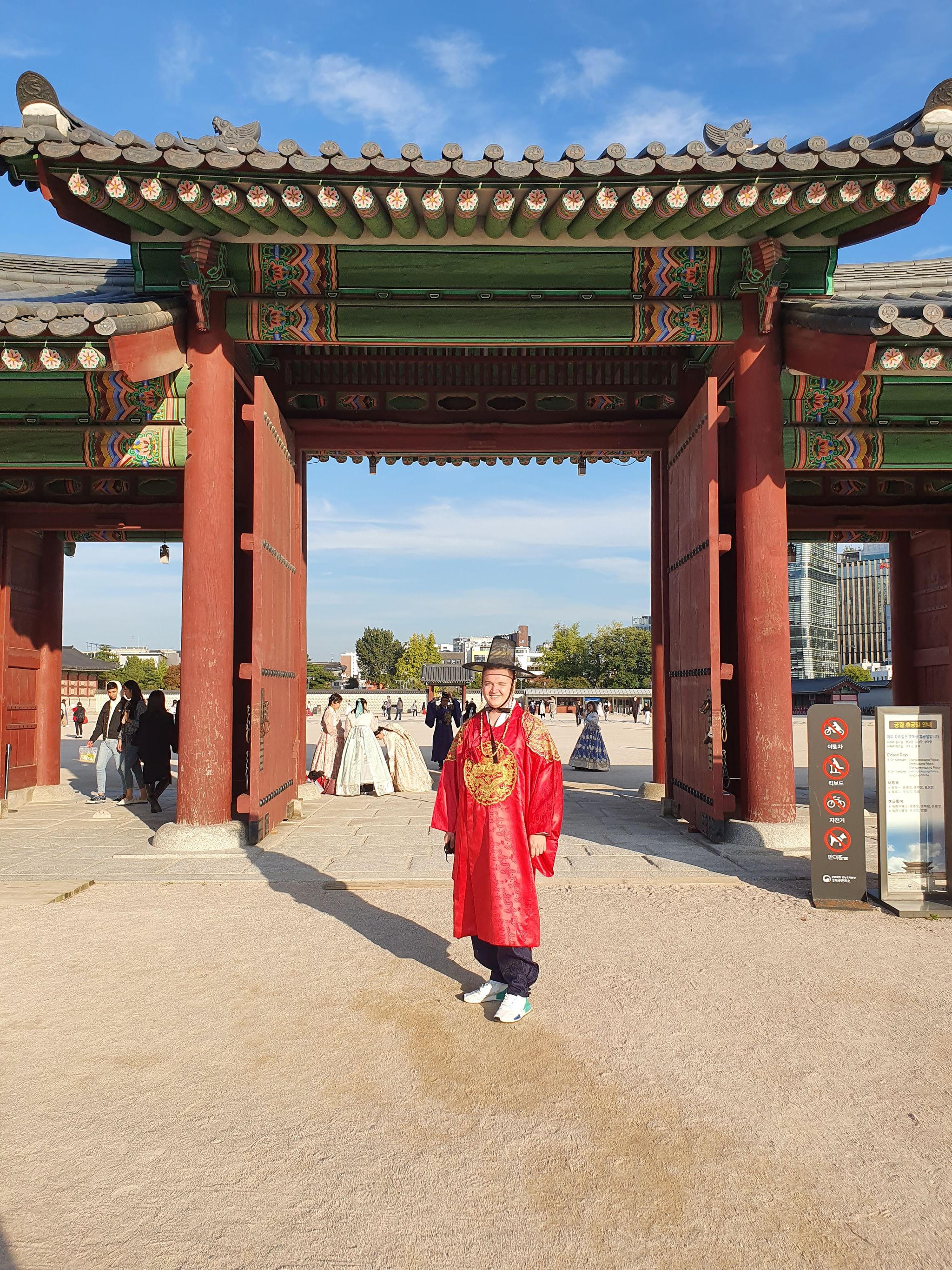

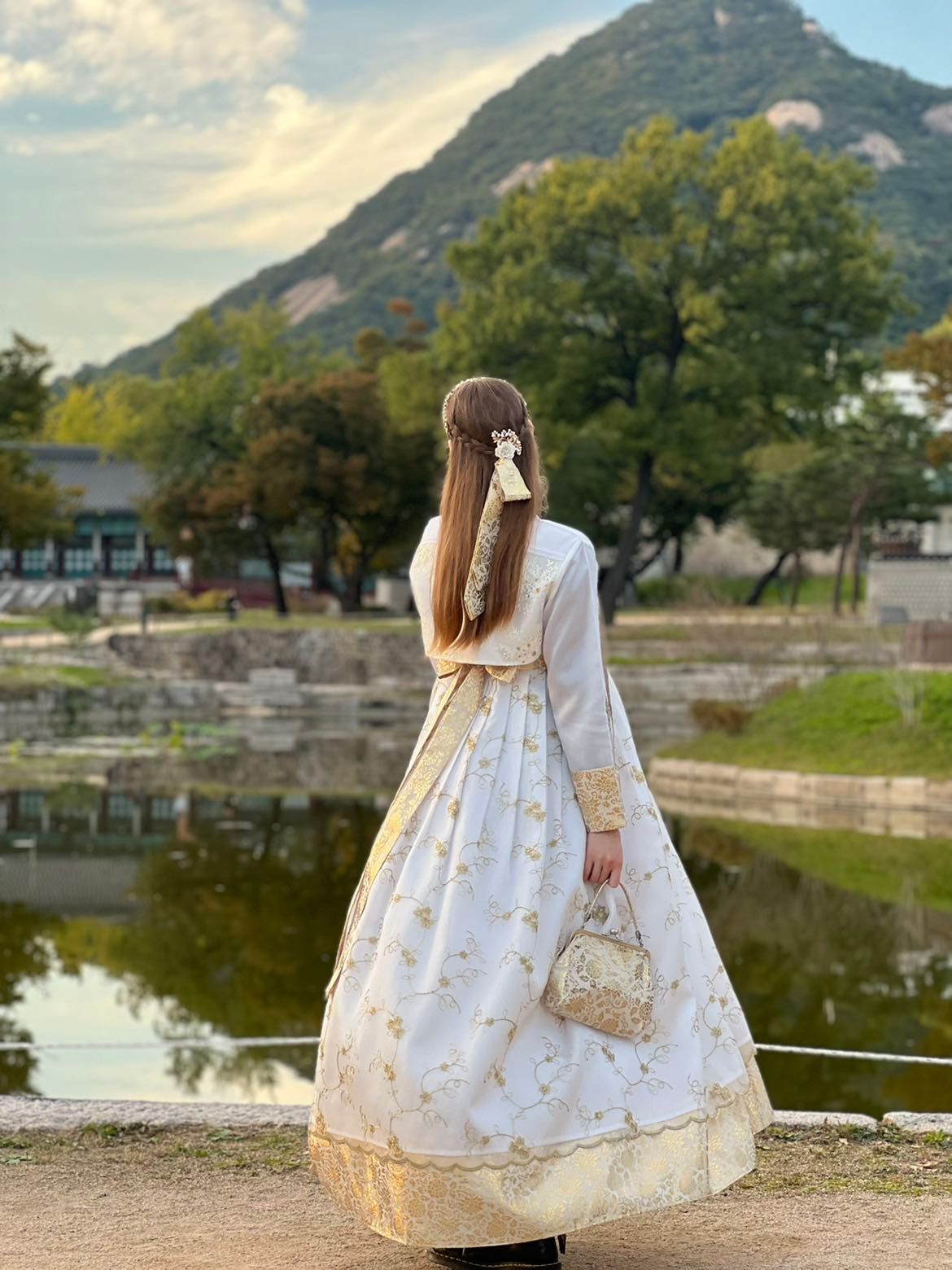

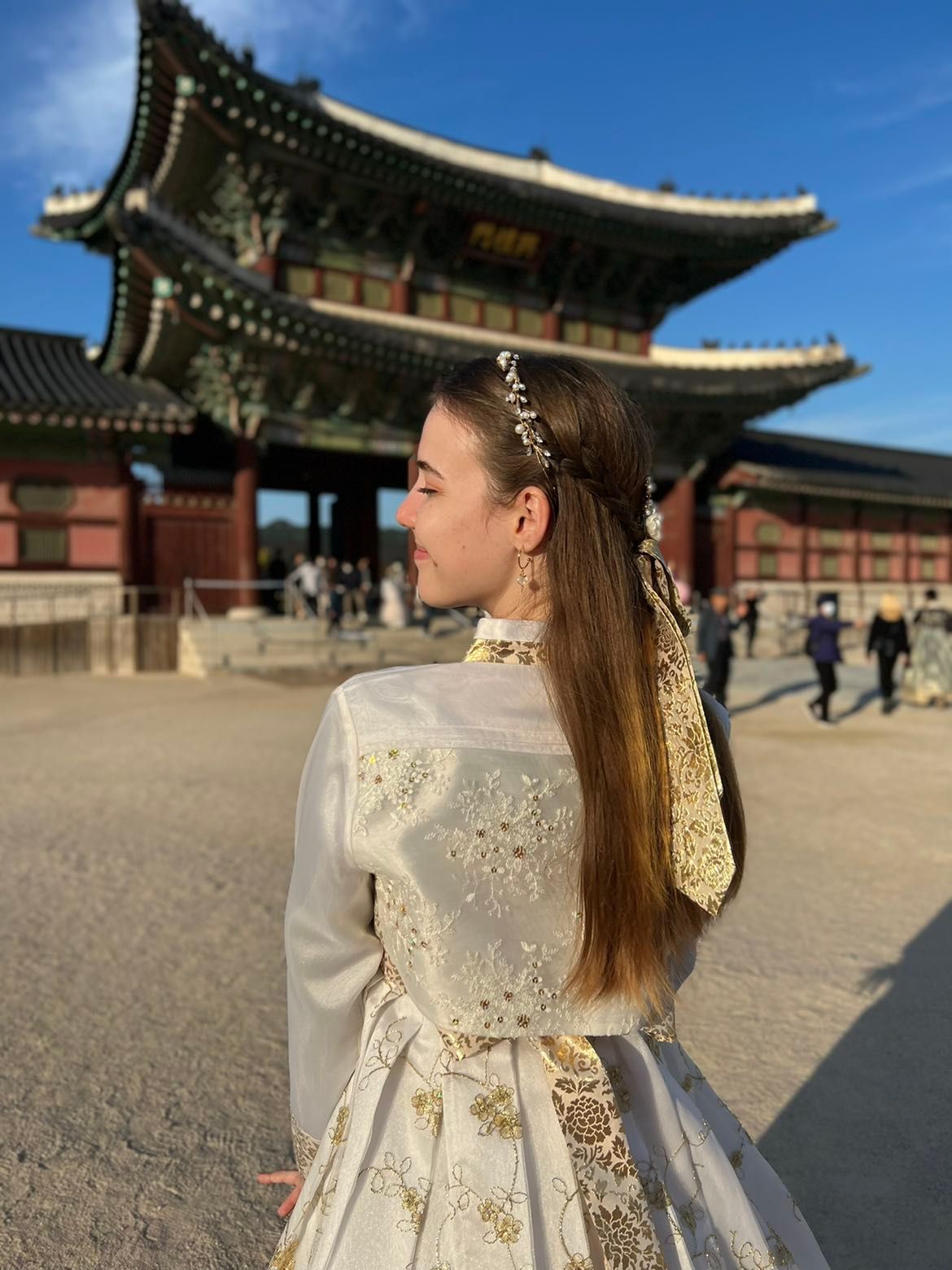

To be honest, I can tell less about the history of Gyeongbokgung Palace. Did I mention that Koreans aren't very good with signage and information boards? Actually, you walk through the palace without knowing exactly what is what. But for an experience with Hanbok it is definitely worth seeing and if you know the history well or have informed yourself beforehand - there are certainly audio tours - you can enjoy the visit more and go out informative. For me, as I said, the huge parks wrapped in the bright colors of autumn and the older Hanok houses, which were also restored, were particularly amazing. When I was in Hanok Village in Jeonju, the paintings on the houses there were old and chipped. In Gyeongbokgung Palace, however, most things seemed so beautifully new.
Overall, the visit, including taking pictures and all the trimmings, lasts about two hours. I recommend planning enough time in any case. The palace is open from 10 a.m. to 6 p.m. Unfortunately, on my first visit, we arrived too late at around 5 p.m. and were kicked out after almost 50 minutes and didn’t even begin to see half of the palace. From mid-October to early November, there was even a night tour with lanterns for lighting from 7 p.m. - unfortunately I didn't find out about it until much too late and couldn't see it. If you feel like it, you can also visit the National Museum right next to the palace on the same site. But I was actually less drawn to museums in Korea, although the history of Korea is definitely super interesting for some. I got my dose of history when I visited Jeonju with my friend's uncle and he gave us some insight into Korean history. Nevertheless, it is interesting to be able to slip into the traditional clothes of Korea and experience what it must have been like back then.
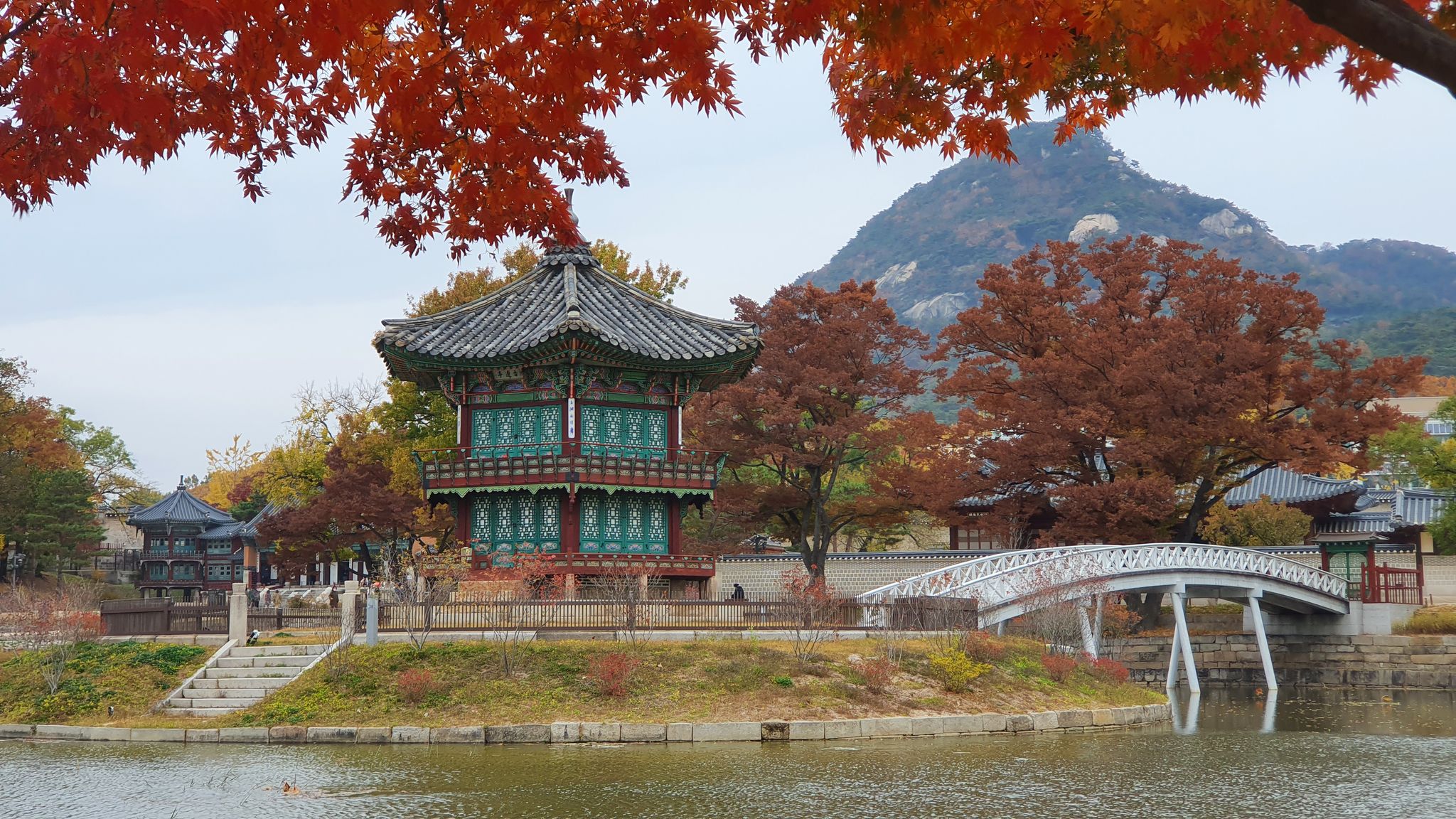

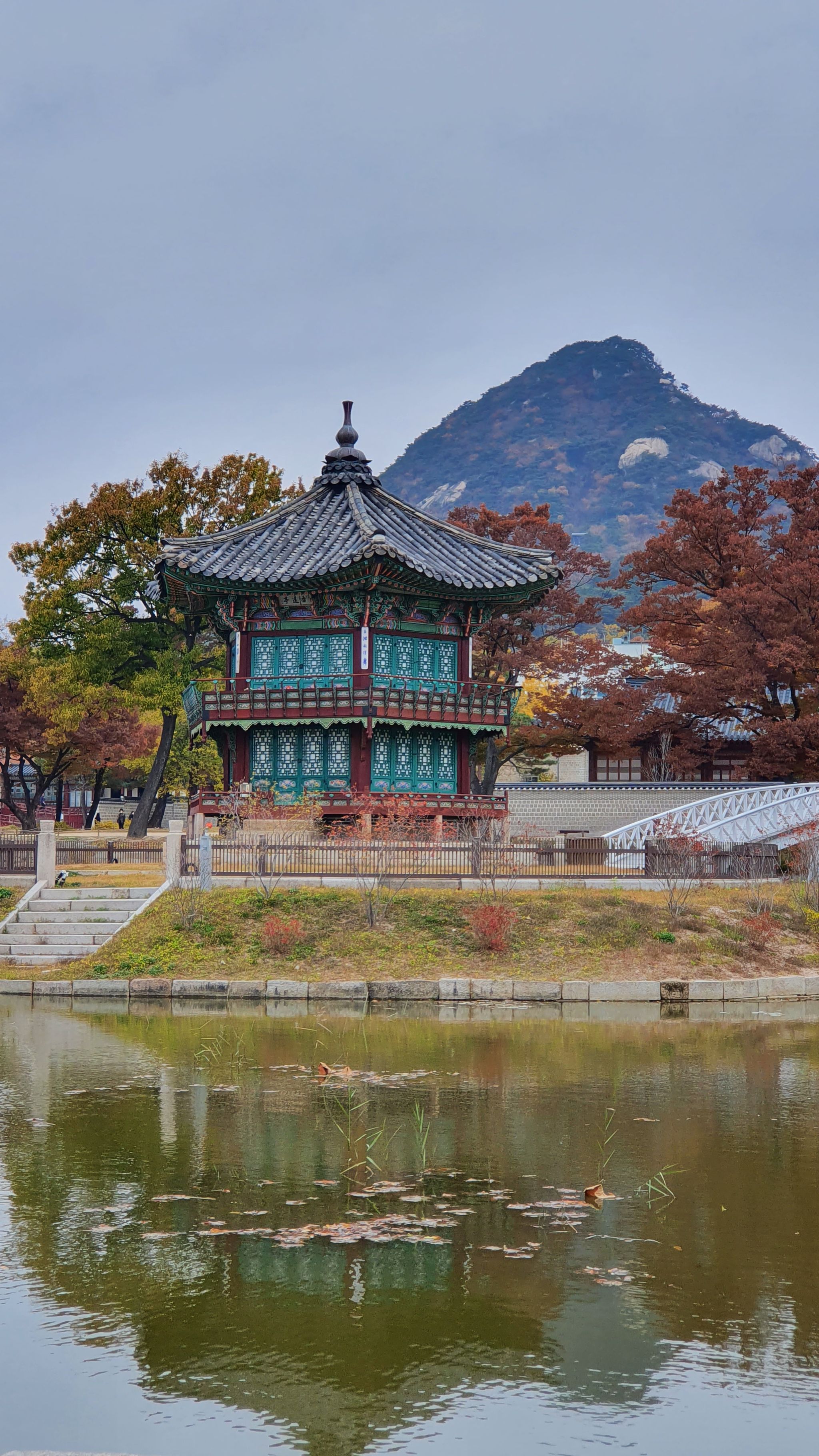



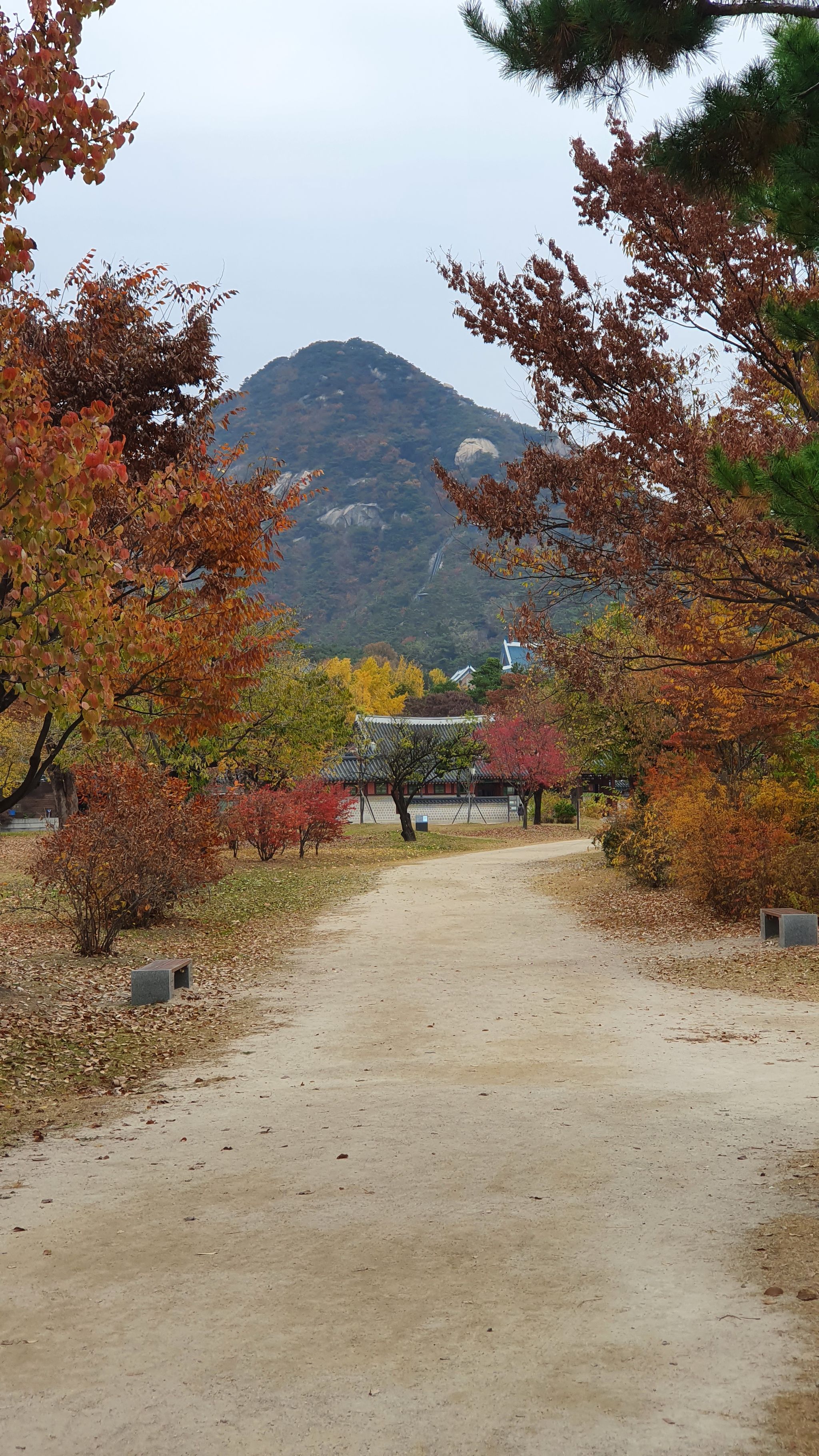

0 Comments(moderated)